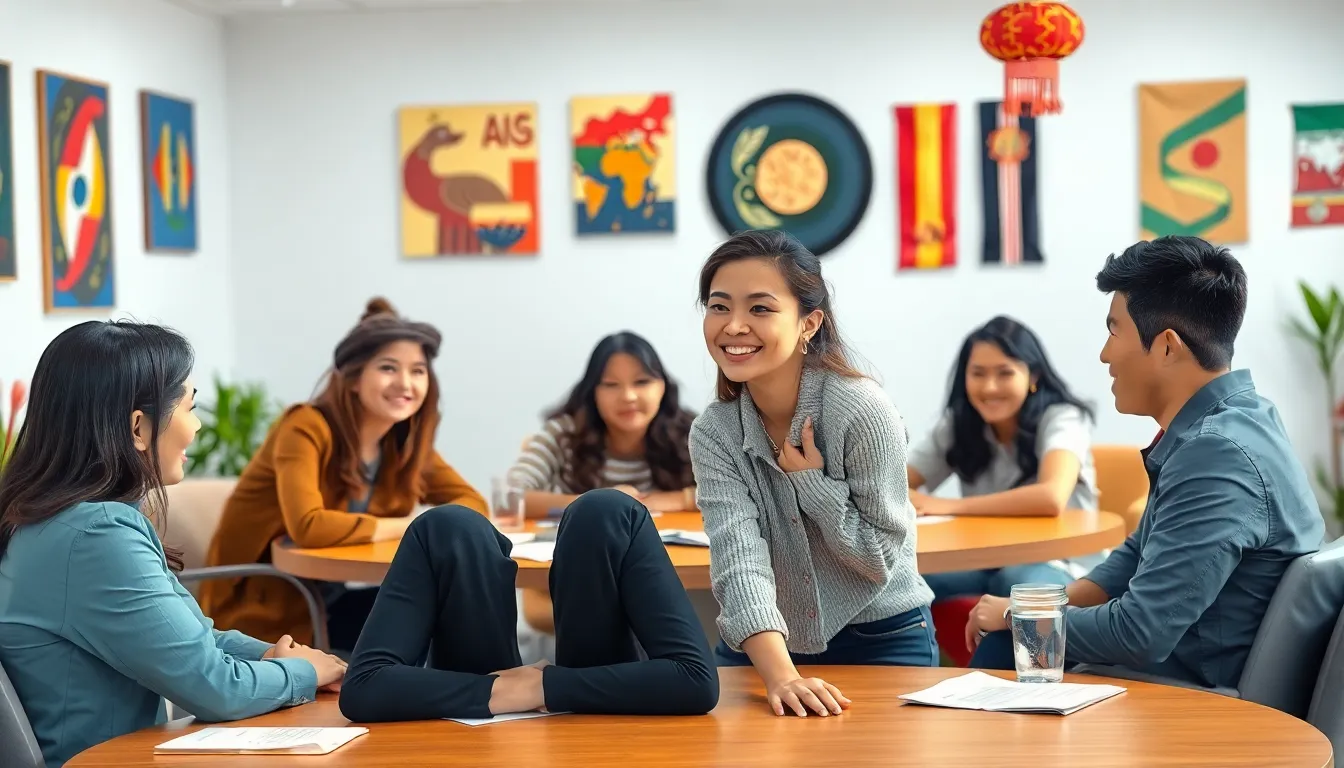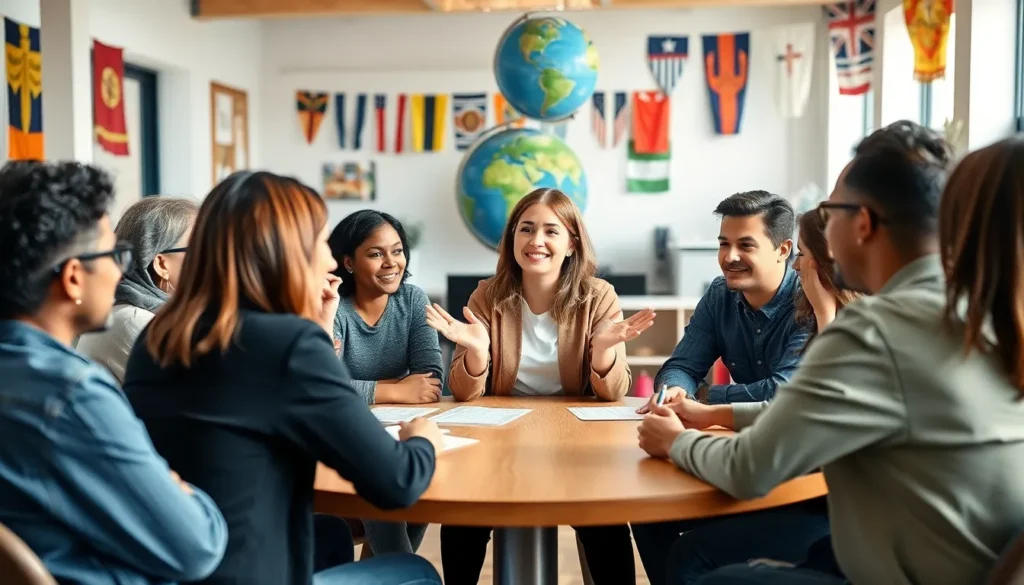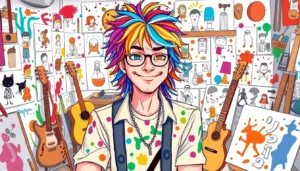In a world where cultural clashes can spark debates fiercer than a game of tug-of-war, cultural dialogues step in as the peacekeepers. They’re like the friendly neighbor who brings over cookies to settle a dispute over the property line. These conversations not only bridge gaps between diverse backgrounds but also sprinkle a little humor into the mix, reminding us that we’re all human—even if some of us think pineapple belongs on pizza.
Navigating the rich tapestry of cultures can feel like trying to assemble IKEA furniture without instructions. Yet, cultural dialogues offer the blueprint for understanding and connection. By engaging in these discussions, individuals can discover shared values and unique perspectives, transforming misunderstandings into opportunities for growth. So, let’s dive into the delightful world of cultural dialogues, where every conversation can turn into a celebration of our beautifully chaotic human experience.
Table of Contents
ToggleUnderstanding Cultural Dialogues
Cultural dialogues serve as essential tools for fostering relationships among diverse groups. Engaging in these conversations nurtures understanding and respect across different backgrounds.
Definition and Importance
Cultural dialogues refer to discussions that promote understanding among individuals from varied backgrounds. These dialogues bridge gaps and create opportunities for learning. Importance lies in their ability to address misconceptions and build connections. Such conversations highlight shared values while celebrating unique differences. Engaging in cultural dialogues can enrich personal growth and enhance community cohesion. Ignoring these exchanges limits one’s perspective on the world.
Historical Context
Cultural dialogues have deep historical roots, dating back to ancient civilizations. Early trade routes fostered exchanges among cultures, allowing ideas to flow freely. Throughout history, major events such as the Renaissance and Enlightenment sparked significant cross-cultural interactions. Many societies recognized the necessity of understanding one another to promote peace and coexistence. War and conflict often followed a lack of open dialogue, which underscored cultural interactions’ vital role. Examining these historical contexts reveals the continuous relevance of cultural dialogues in shaping social landscapes.
Key Elements of Cultural Dialogues

Cultural dialogues thrive on fundamental components that enhance understanding among diverse groups. Two crucial elements include communication styles and cultural sensitivity.
Communication Styles
Nonverbal cues play a significant role in communication, often conveying emotions and reactions without words. Different cultures embrace varying degrees of expressiveness, influencing how messages are delivered and received. Direct styles favor clear and unambiguous language, while indirect styles may prioritize nuance and context. Listening skills are equally vital; active listening fosters trust and demonstrates respect for others’ perspectives. In conversations, asking open-ended questions encourages deeper engagement, allowing participants to share personal stories and insights.
Cultural Sensitivity
Recognizing differences in cultural practices promotes respect and reduces misunderstandings in dialogues. It’s imperative to approach discussions with an open mind, acknowledging personal biases and assumptions. Participants should strive for empathy, seeking to understand the cultural backgrounds and experiences of others. Educating oneself about various traditions and customs enhances awareness and strengthens relationships. Speaking out against stereotypes creates an atmosphere of trust and safety. Cultivating cultural sensitivity contributes to more meaningful interactions and helps build bridges across differences.
The Role of Cultural Dialogues in Society
Cultural dialogues play a pivotal role in fostering understanding and cohesion within diverse communities. These exchanges cultivate empathy and awareness, allowing individuals to connect on deeper levels.
Promoting Understanding
Promoting understanding occurs when individuals share their perspectives and experiences. Engaging in these dialogues helps clarify cultural nuances that influence behaviors and beliefs. Participants discover common ground, which strengthens community ties. They also develop an appreciation for differing viewpoints, expanding their horizons. By exchanging ideas, individuals challenge stereotypes and reduce prejudices, fostering an environment of respect and openness. These conversations not only enhance personal growth but also contribute to societal harmony.
Conflict Resolution
Conflict resolution benefits significantly from cultural dialogues. Addressing misunderstandings through open conversation allows for the identification of underlying issues. Engaging in discussions can de-escalate conflicts by providing a safe space for expression. Participants learn to articulate their feelings while actively listening to others. As a result, solutions that respect all parties often emerge. By facilitating these dialogues, communities build resilience against future conflicts, creating a culture of collaboration. структурировать диалог между различными культурами укрепляет социальные связи и уменьшает напряженность.
Challenges in Cultural Dialogues
Cultural dialogues face several challenges that can hinder effective communication and understanding. These obstacles often arise from differences in language, interpretation, and context.
Language Barriers
Language barriers present a significant challenge in cultural dialogues. Many participants may not share a common language, leading to difficulties in expressing thoughts and feelings. Non-native speakers might struggle with nuances or idiomatic expressions, creating misunderstandings. Additionally, varying proficiency levels can affect how messages are conveyed and received. Many rely on interpreters, which can further complicate the conversation. Effective communication often requires tailored approaches that accommodate diverse linguistic needs.
Misinterpretations
Misinterpretations can disrupt the flow of cultural dialogues. Individuals may misread nonverbal cues or cultural references, leading to confusion or offense. Different cultural backgrounds often shape perceptions, altering how messages are interpreted. For example, a gesture deemed friendly in one culture might be considered disrespectful in another. Context plays a crucial role in understanding intent and meaning. Clear communication and active listening are essential to minimize these misinterpretations. By fostering an environment conducive to open exchanges, participants can navigate these challenges more effectively.
Cultural dialogues serve as vital tools for fostering understanding and respect among diverse communities. By engaging in these conversations individuals can navigate complexities and uncover shared values that promote harmony. The process encourages empathy and awareness leading to personal growth and stronger social ties.
While challenges like language barriers may arise the benefits of open dialogue far outweigh the difficulties. As communities embrace these exchanges they not only address misunderstandings but also build resilience against potential conflicts. Ultimately cultural dialogues enrich the human experience offering a pathway to a more inclusive and connected world.





